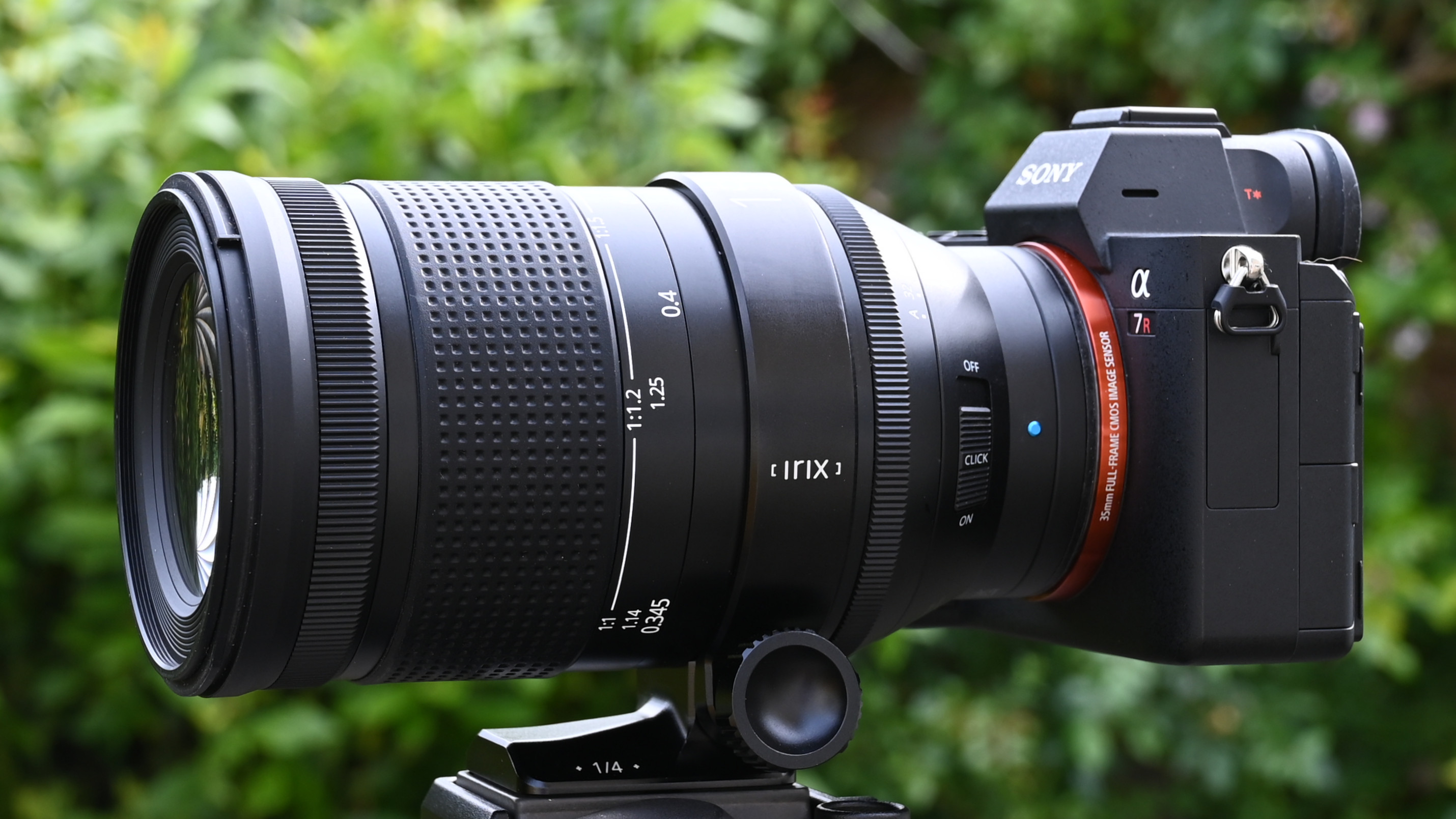
The original, full-frame compatible Irix 150mm Macro 1:1 F2.8 Dragonfly has been available since 2018 in Canon EF, Nikon F and Pentax K mount options. Keeping up with the mirrorless times, a new version is now also available in Sony E-mount, while the DSLR-based Canon and Nikon editions are compatible with EOS R and Nikon Z system mirrorless cameras via their respective mount adapters.
As its name suggests, the Irix gives full 1.0x or 1:1 macro magnification at its shortest focus distance. The 150mm focal length is around 50 per cent longer than in most mainstream macro lenses, along with a greater minimum focus distance of 34.5cm, or 13.6 inches. That potentially gives you a more comfortable working distance, especially when shooting timid bugs.
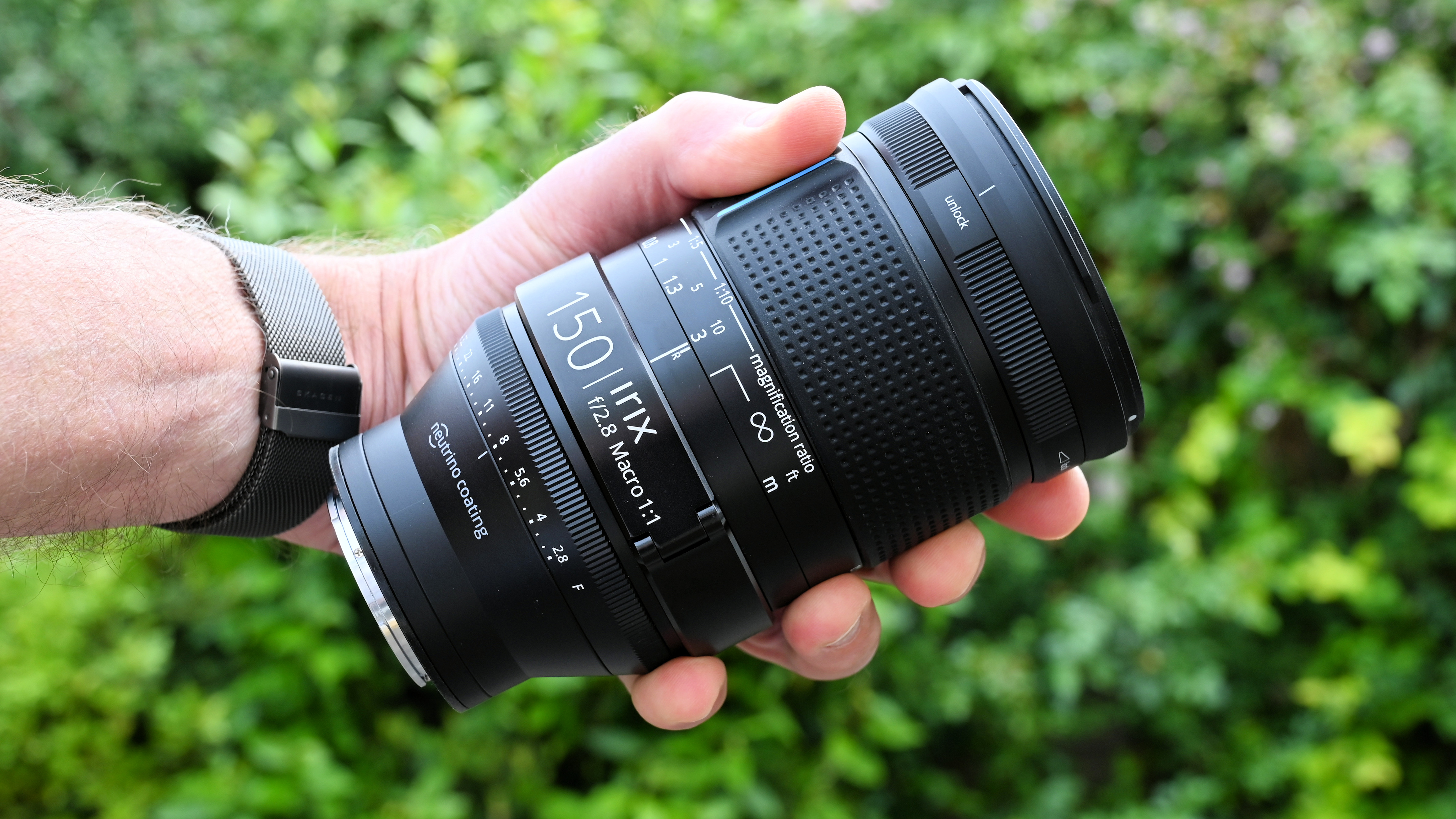
If Irix isn’t already on your radar, the company is worthy an introduction. It was founded in 2016, by a band of professional photographers who wanted to design lenses to their own exacting criteria. A truly international outfit, Irix designs its lenses and accessories at its headquarters in Switzerland, manufactures its glass in Japan, and the assembly work is done in South Korea. Distribution offices are based in North and South America, Europe and Asia.
Specifications
Mount: Sony E
Full-frame: Yes
Autofocus: No
Stabilization: No
Lens construction: 12 elements in 9 groups
Angle of view: 16 degrees
Diaphragm blades: 11
Minimum aperture: f/32
Minimum focusing distance: 0.345m
Maximum magnification ratio: 1.0x
Filter size: 77mm
Dimensions: 87x170mm
Weight: 900g
Key features
Top of the features list is the full 1.0x macro ability, delivering small objects to the camera’s image sensor at full life size. And when you can fill the frame with something little larger than a postage stamp, that naturally lends itself to enormous magnification when viewing the resulting images on-screen or in print. As a macro lens, the Irix is optimized for close-up performance but, as with the vast majority of macro lenses, it also works perfectly well at greater distances, all the way to infinity. The combination of a 150mm focal length and fairly fast f/2.8 aperture also makes the lens ideal for tight head-and-shoulder portraiture.
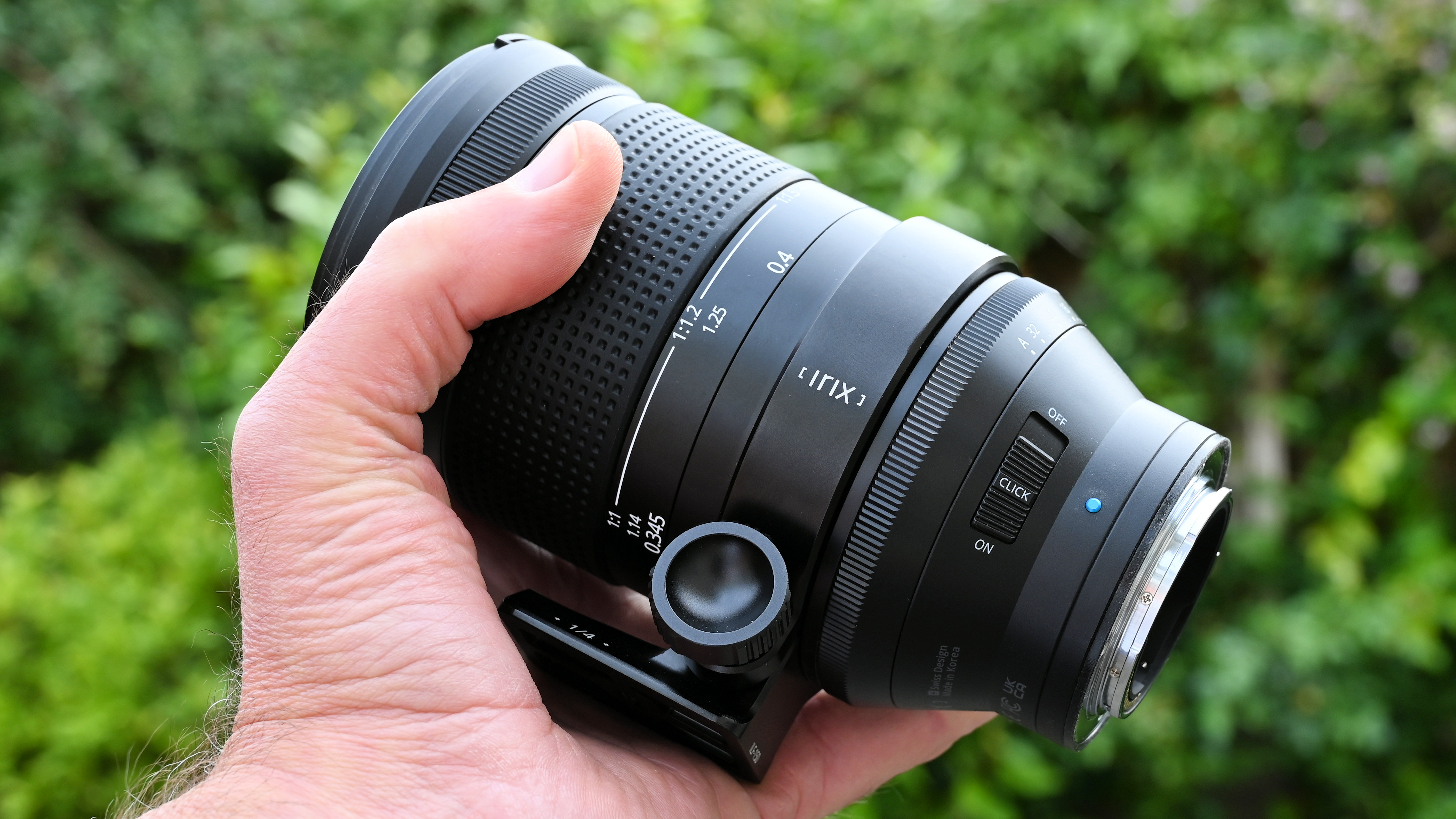
A couple of common features that are lacking are autofocus and optical image stabilization, as fitted to the Canon RF 100mm F2.8 L Macro IS USM, Nikon Z MC 105mm f/2.8 VR S and Sony FE 90mm F2.8 Macro G OSS. It’s worth bearing in mind though, that despite their shorter focal lengths, these lenses are getting on for twice the price of the Irix.
The lack of autofocus isn’t a deal-breaker, as most photographers generally prefer to shoot macro images with manual focus anyway. The depth of field is incredibly tight even with narrow apertures, so it pays to focus on exactly the point you want. A plus point is that the Irix has a very well-rounded aperture diaphragm, based on 11 curved blades, which helps to retain the quality of bokeh when stopping down. It also has a very narrow minimum aperture of f/32, which can help in gaining more than a miniscule depth of field.
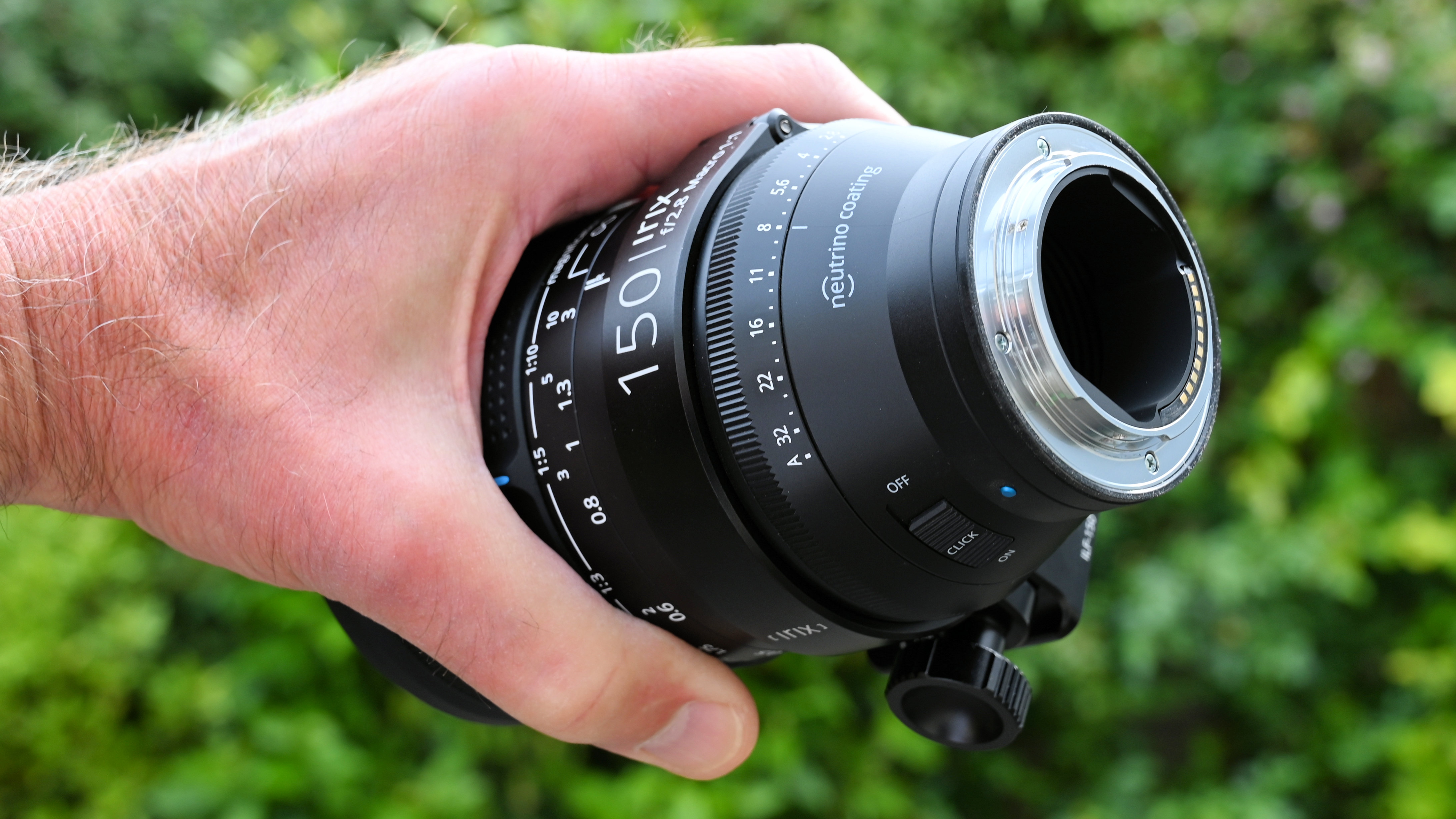
Unlike ‘dumb lenses’ including the similarly priced Laowa 90mm F2.8 2x Ultra Macro APO (which gives up to 2x macro magnification for Canon RF, Leica L, Nikon Z and Sony E mount cameras) the Irix has built-in electronics for data communication with the host camera body. As such, there are no restrictions on shooting in the full range of PASM modes, and lens-based EXIF information is recorded in image files. Illumination of focus assist and confirmation lamps are enabled in the viewfinders of DSLRs, along with a display of the aperture setting. A bigger bonus for DSLRs with the original lens is that the electronics avoid a dark viewfinder image when using narrow apertures. For mirrorless cameras, focus peaking options are generally available, as well as an ultra-precise magnified preview, the latter also being available for DSLRs in Live View mode.
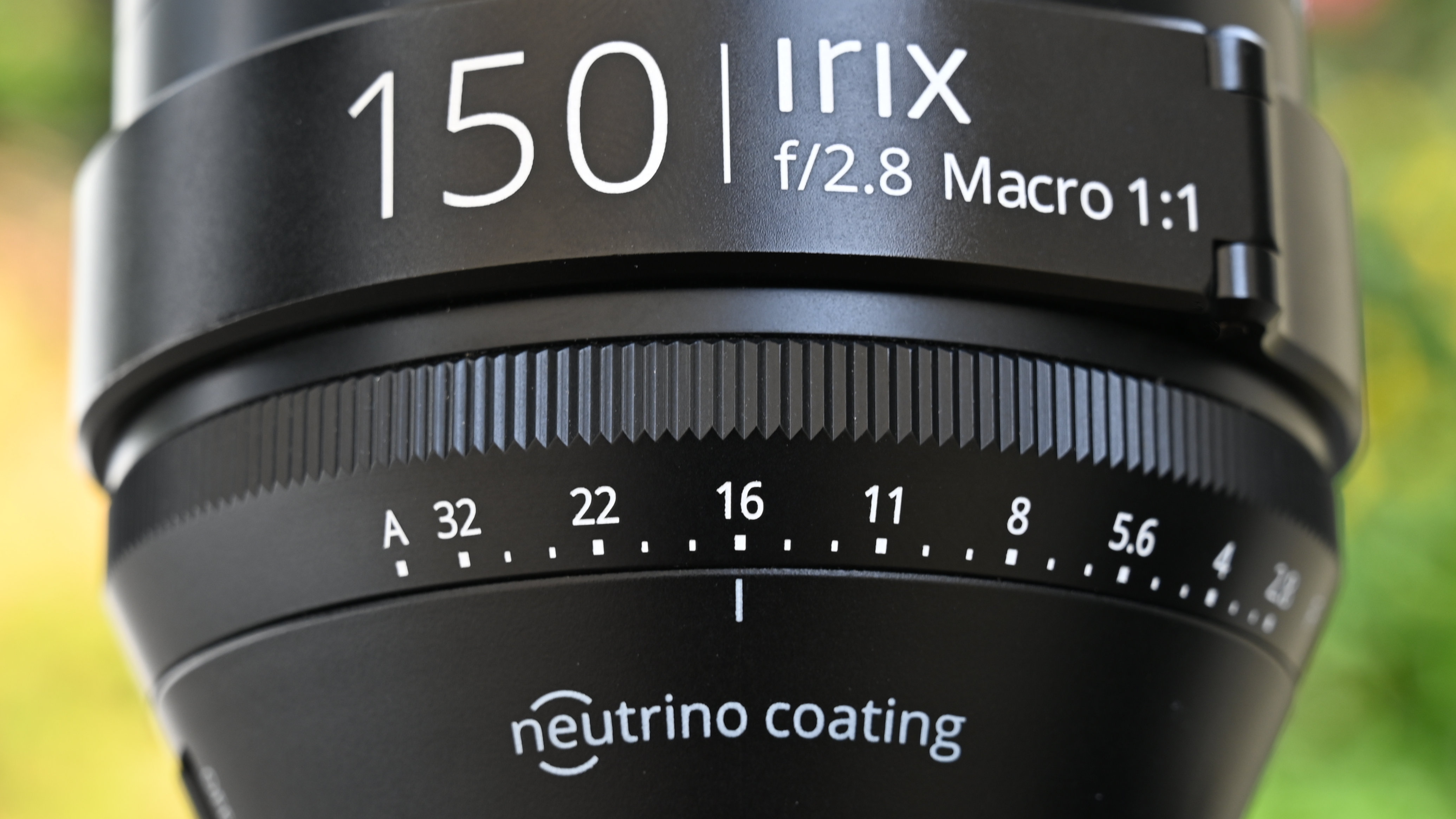
Getting back to optical image stabilization, or the lack of it, it’s not really an issue with the vast majority of mirrorless cameras that feature in-body image stabilization. And even the ‘hybrid’ optical stabilizers that aim to correct for x-y shift as well as the usual angular vibration for close-up shooting, featured in most of Canon’s macro lenses like the RF 100mm F2.8 L Macro IS USM tend to be less effective in full 1.0x macro mode.
Build and handling
Build quality is impeccable. The lens has a sturdy, precision-engineered alloy barrel, high-quality metal mounting plate and features an extensive set of weather-seals. Irix’s advanced Neutrino coating is applied to minimize ghosting and flare.
The lens is quite large and weighs the best part of a kilogram, but that’s really governed by the combination of 150mm focal length and f/2.8 aperture. Even so, handling is very refined. The large and tactile manual focus ring operates with a smooth and fluid feel, and it has a long rotational travel that enables ultra-precise adjustments. A raised ridge on the focus ring is a neat extra for putting focusing under your thumb. And if you want to pre-focus and lock the focus distance in place, there’s a handy locking ring at the front of the barrel.
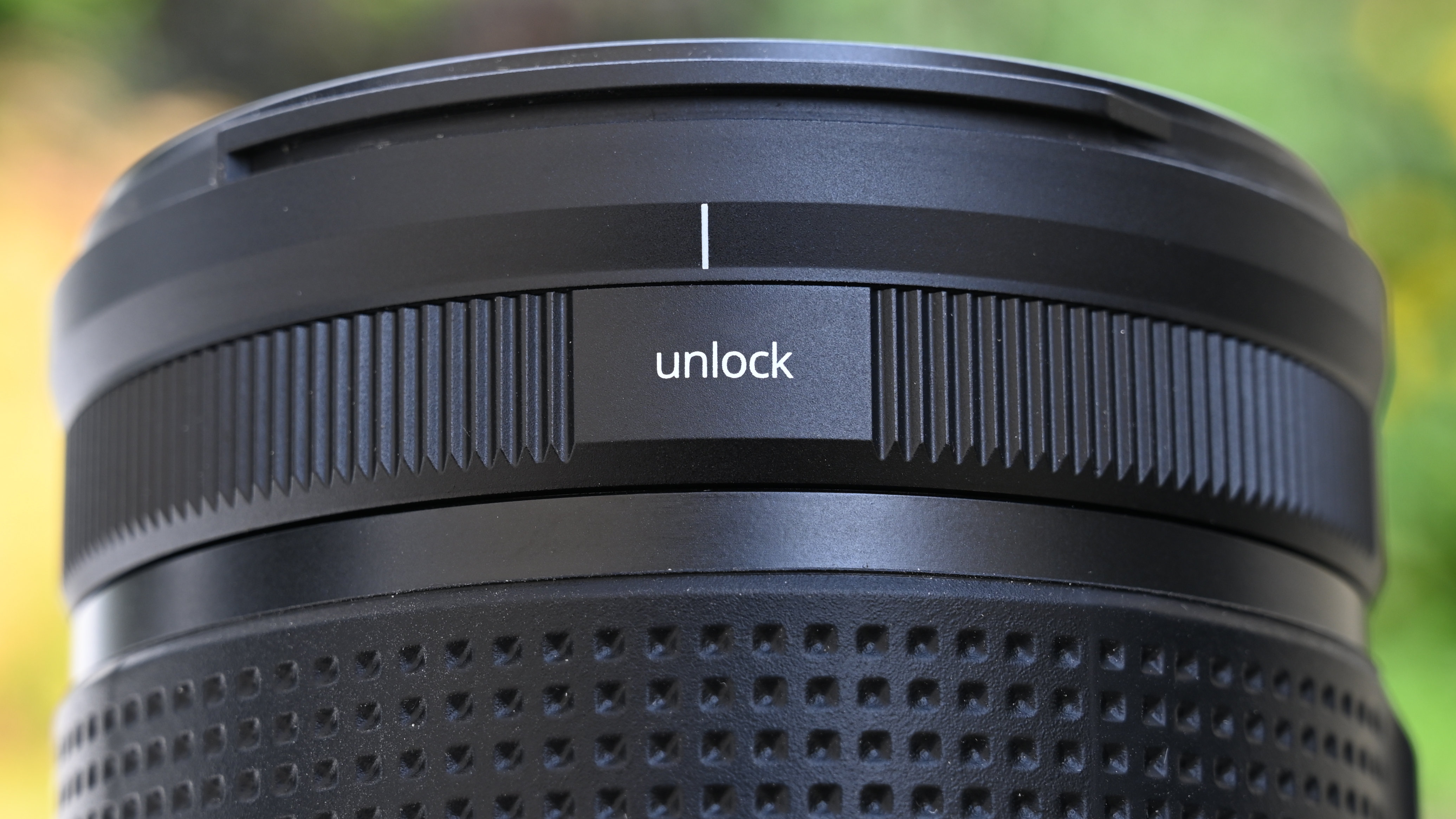
You’ll generally use a tripod for full macro shots, and a good balance is all but essential for the very fine positional adjustments typically required. To help with this, the Irix comes complete with a tripod mounting ring and Arca-Swiss compatible foot. It enables a more ideal center of gravity when shooting in landscape orientation mode, vastly more so in portrait orientation shots. Naturally, the mounting ring also enables you to switch between landscape and portrait orientation without needing to adjust the tripod head or use an L-bracket.
A handling bonus of the new Sony E-mount version that was missing in the DSLR options is that it features a physical aperture control ring. Situated at the rear of the barrel, this gives you hands-on control over aperture settings, with click steps of 1/3rd f/stops. For video capture, there’s also a de-click switch, enabling stepless aperture control.
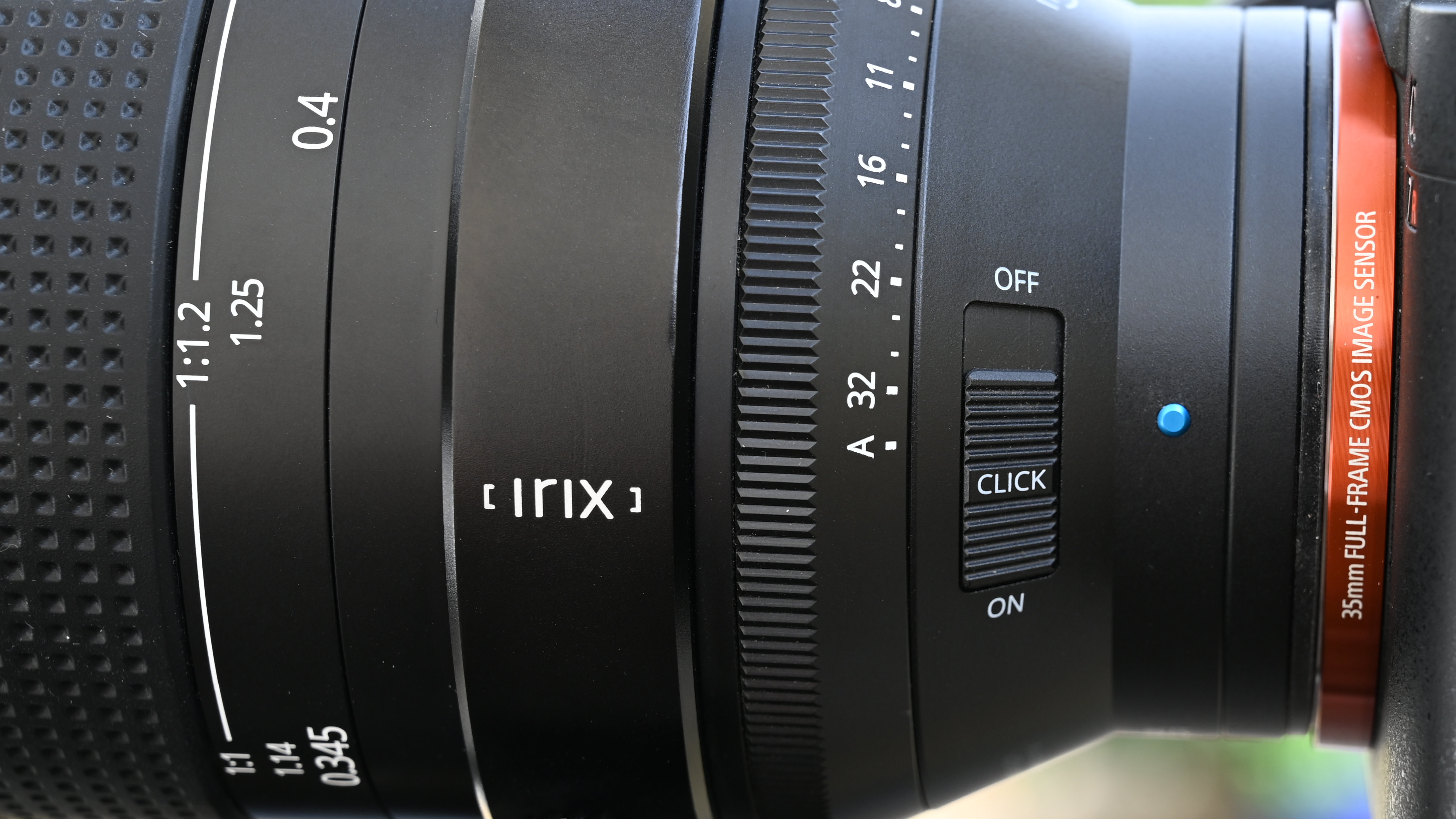
Performance
The devil is in the detail for macro photography. With such large magnifications of very small objects, you need excellent sharpness to take full advantage, revealing levels of fine detail that are invisible to the naked eye. The Irix delivers in spades, delivering outstanding sharpness across most of the frame, throughout most of the aperture range. Sharpness only drops off right out towards the extreme edges and corners, but it’s still very good even here.
In our lab tests, the new Sony E-mount version proved much sharper than the DSLR edition that we tested a while ago in Canon EF-mount. Another plus point that we always hope to see in macro lenses is that there’s virtually no field curvature, so corner-to-corner macro sharpness is retained when shooting flat objects head-on, like antique coins and postage stamps.
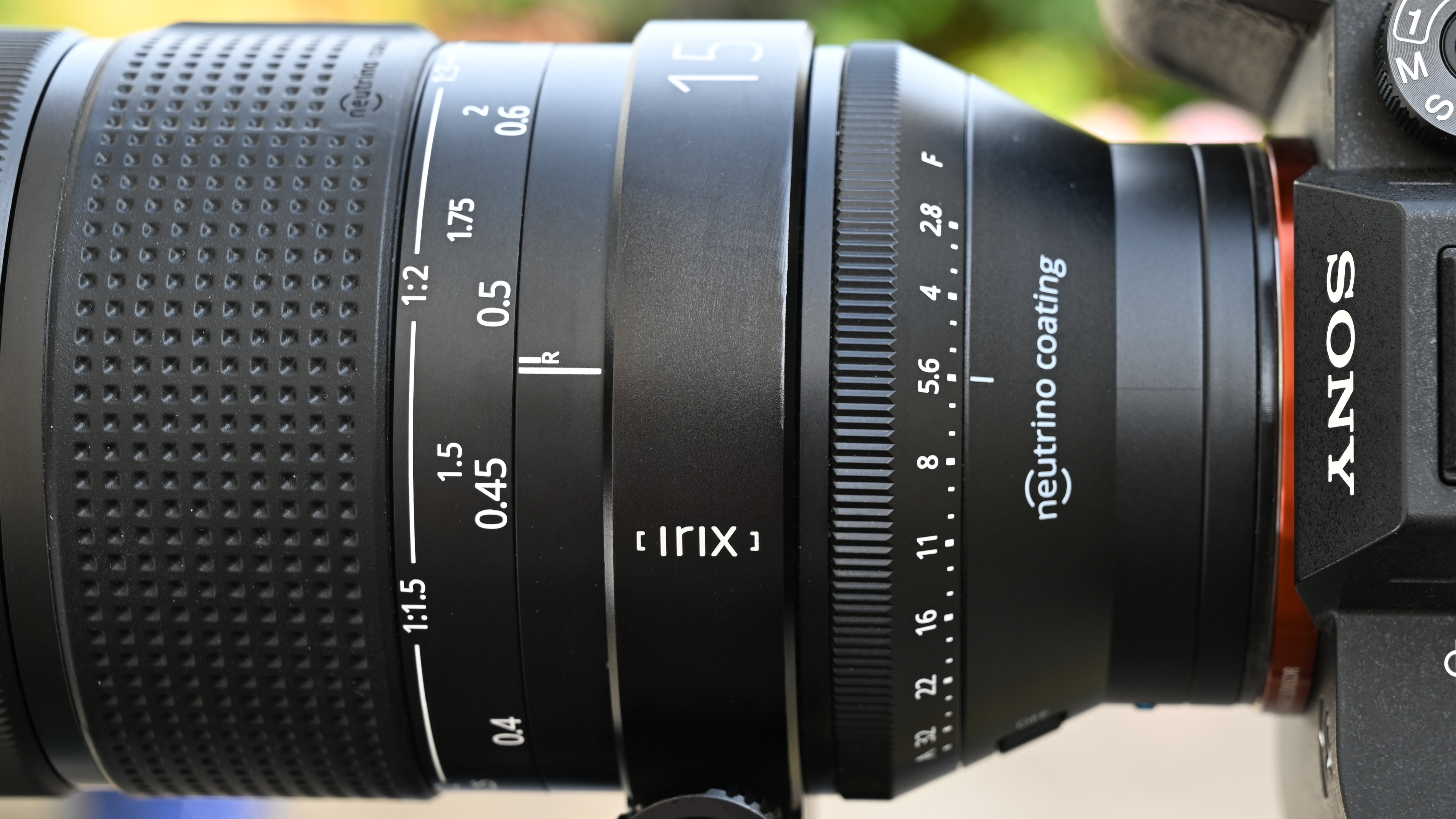
As we’ve mentioned, very narrow apertures are often preferred in macro photography, so you can get anything more than miniscule depth of field. Sharpness tends to drop off noticeably when using narrow apertures, due to an increase in diffraction as the diaphragm blades close down. The Irix does well to maintain high levels of sharpness at really narrow apertures, on a par with some of the best, latest and most expensive macro lenses on the market, including the Canon RF 100mm F2.8 L Macro IS USM, Nikon Z MC 105mm f/2.8 VR S and Sony FE 90mm F2.8 Macro G OSS.
There’s more good news when it comes to color fringing, as this remains very minimal throughout the whole aperture range and right out to the edges and corners, where lateral chromatic aberration can often be a problem. It’s virtually a zero-distortion lens as well, even without applying any in-camera auto correction. All in all, image quality is highly impressive.
Sample images


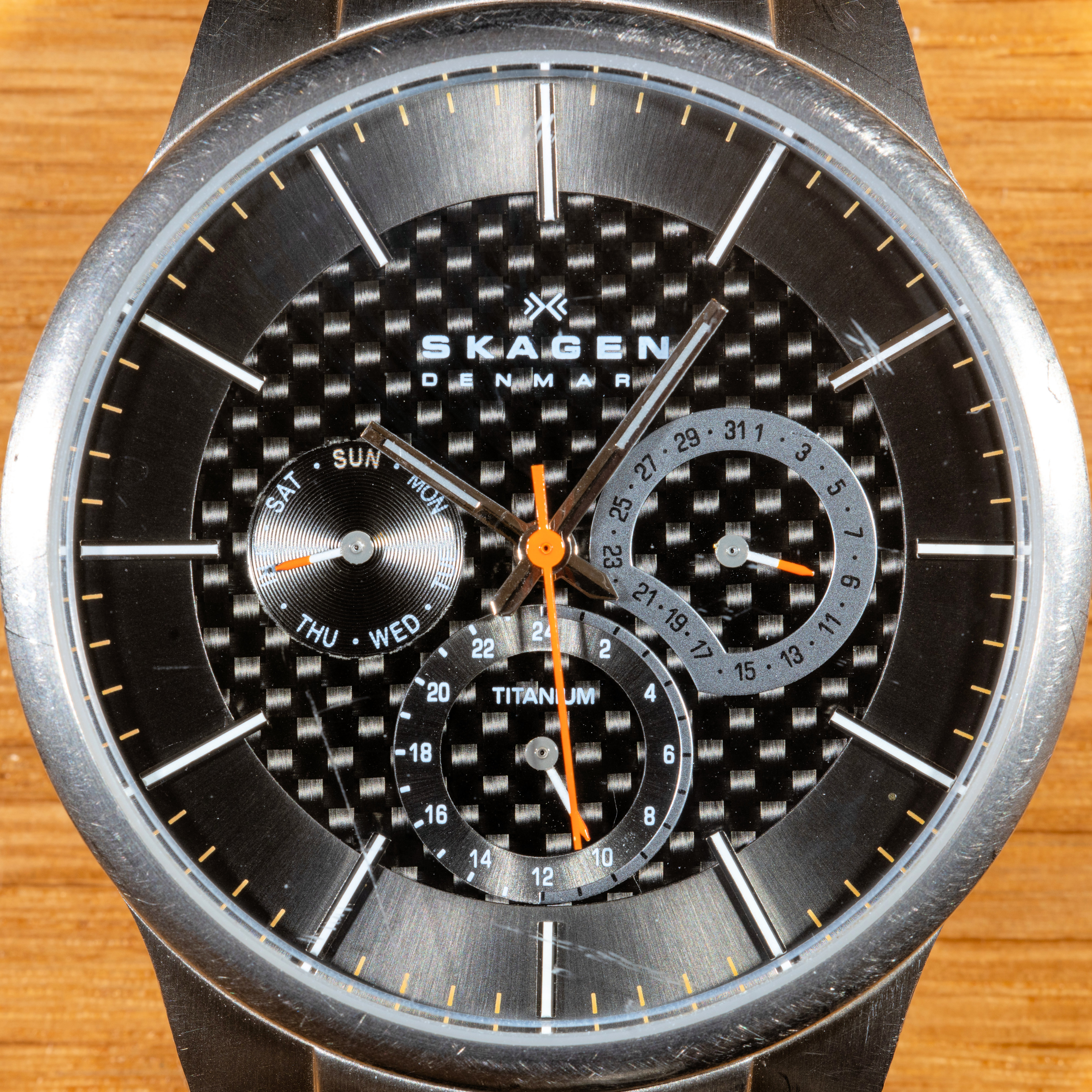

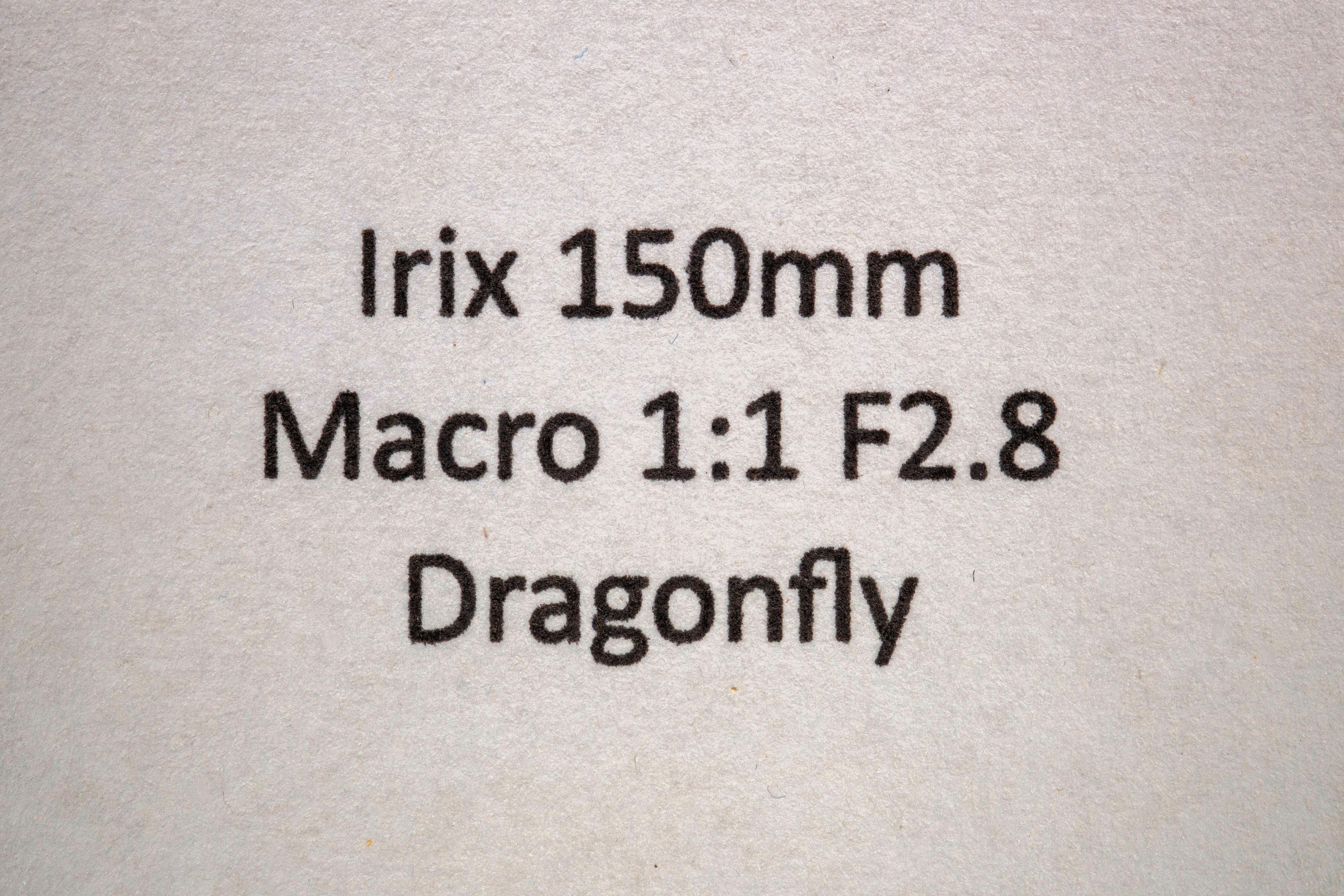
Lab results
We run a range of lab tests under controlled conditions, using the Imatest Master testing suite. Photos of test charts are taken across the range of apertures and zooms (where available), then analyzed for sharpness, distortion and chromatic aberrations.
We use Imatest SFR (spatial frequency response) charts and analysis software to plot lens resolution at the center of the image frame, corners and mid-point distances, across the range of aperture settings and, with zoom lenses, at four different focal lengths. The tests also measure distortion and color fringing (chromatic aberration).
Sharpness:
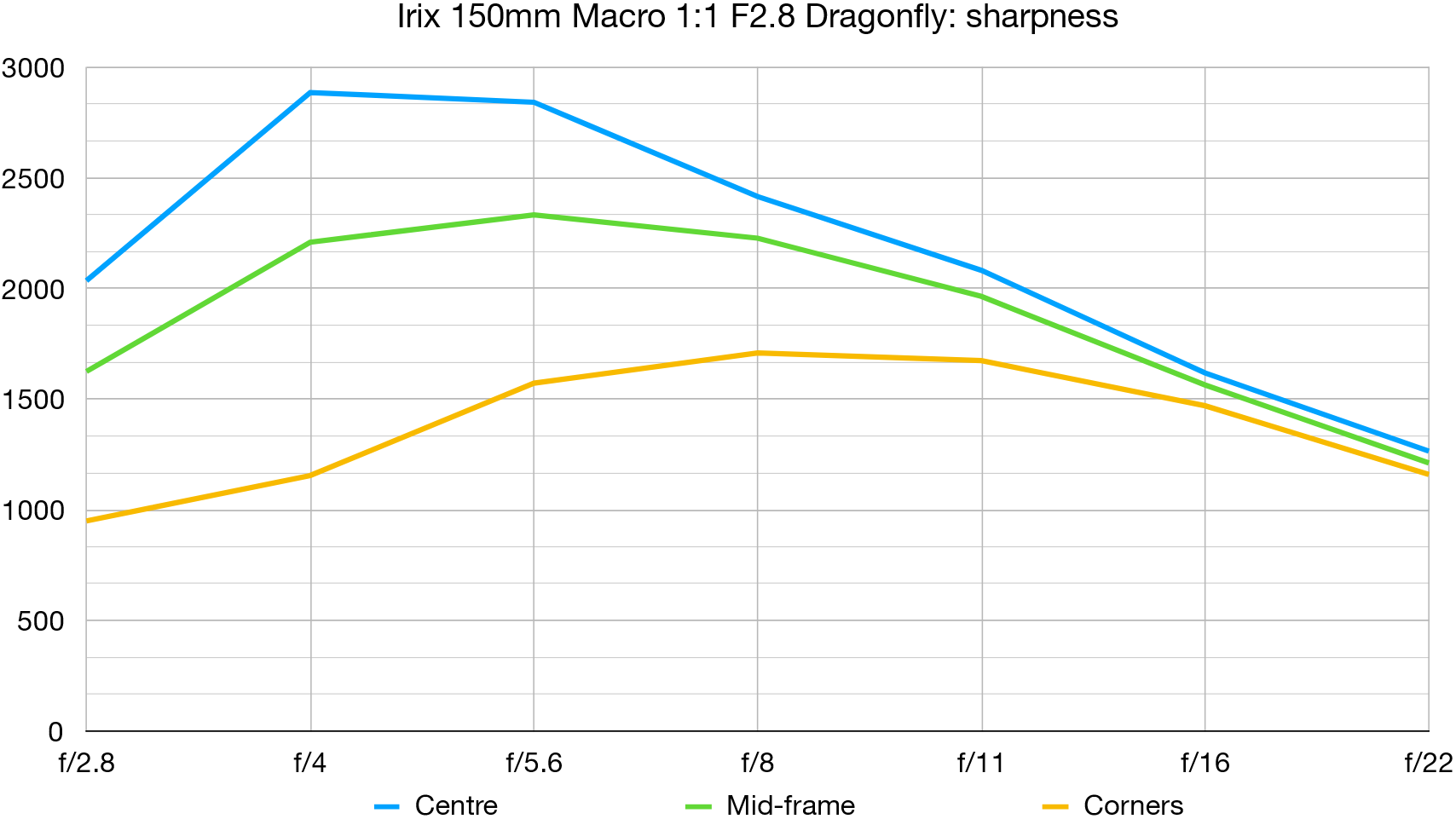
Levels of sharpness across most of the image frame are excellent from the get-go, even wide-open at f/2.8. Extreme edge/corner-sharpness comes on strong at f/5.6 and, importantly for a macro lens, sharpness remains respectable when using very narrow apertures.
Fringing:
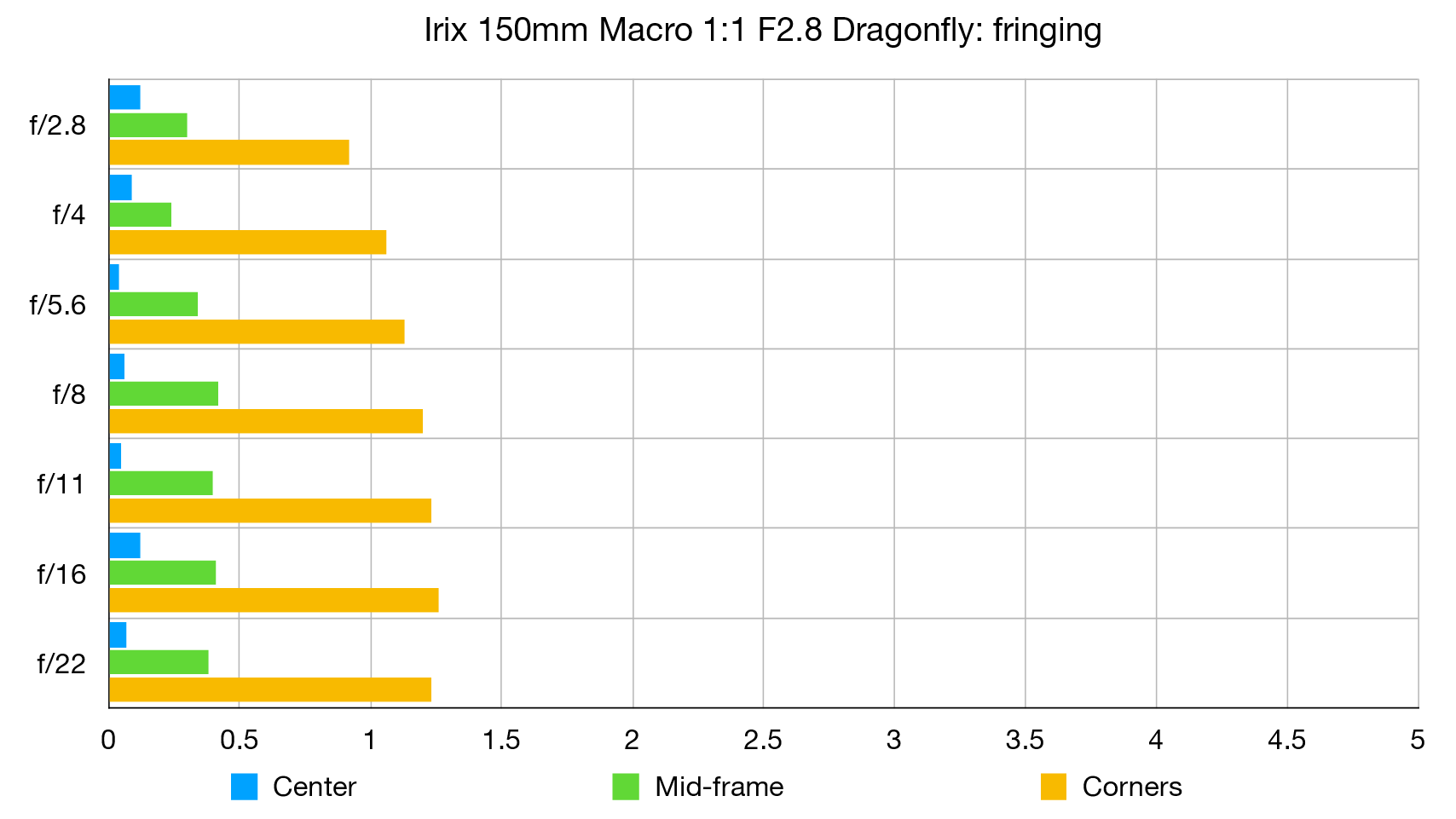
There’s only a little color fringing and it’s only towards the extreme edges and corners of the image frame. And that’s without using automatic in-camera correction, which is supported in Sony bodies.
Distortion: 0.14
It’s not technically a zero-distortion lens but the miniscule amount of pincushion is virtually impossible to spot in practice. In our lab tests, the Irix outperforms the pricier Canon RF 100mm F2.8 L Macro IS USM, Nikon Z MC 105mm f/2.8 VR S and Sony FE 90mm F2.8 Macro G OSS lenses for control over distortion.
Verdict
The new Sony E-mount version of the Irix 150mm Macro takes an excellent DSLR-based lens for Canon, Nikon and Pentax cameras, and makes it even better. With a generous 150mm focal length, premium magnesium alloy build, excellent handling characteristics and the addition of an aperture control ring with switchable click/de-click options, it looks and feels a top-quality lens. That’s backed up by fabulous image quality in every respect. Unlike some competitors, it lacks autofocus and has no optical image stabilization. We certainly don’t think that’s a deal-breaker for macro photography. We really like this Irix and think it’s great value at the price.
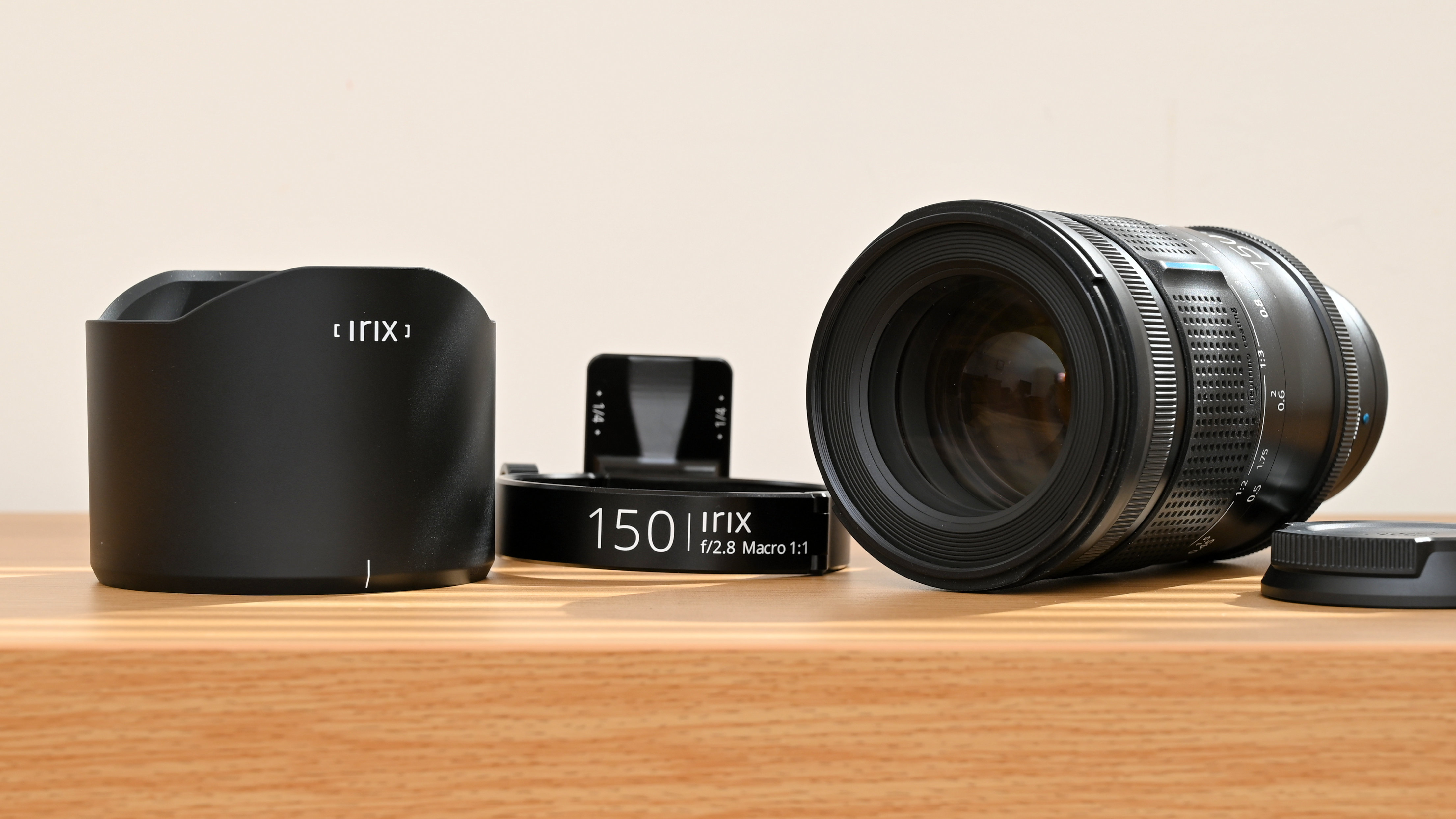
Read more:
• Best camera lenses to get
• Best Canon lenses
• Best Nikon lenses
• Best Sony lenses







